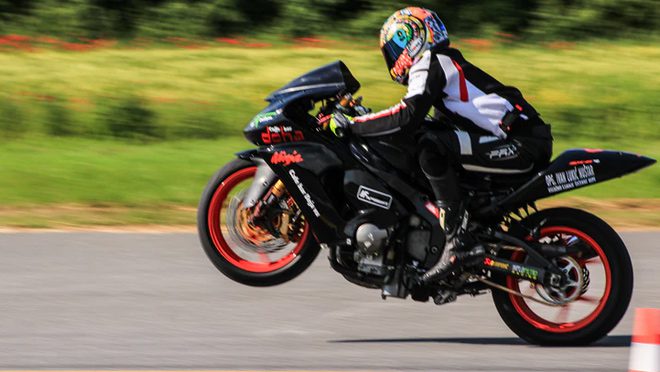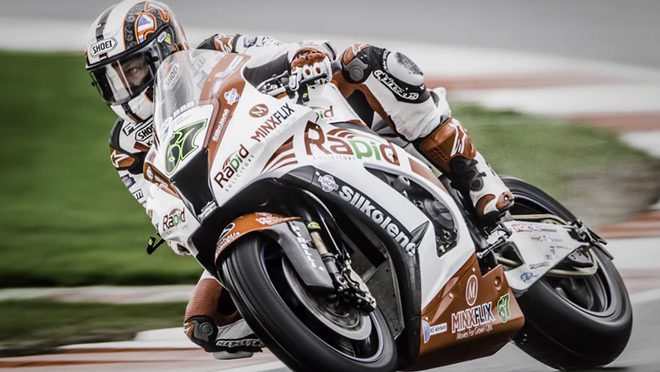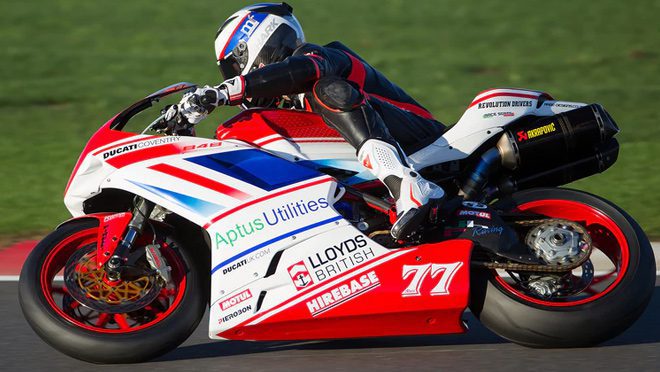Motorcycle games perhaps remain as awesome as they are to players today because no one would dare ride a motorcycle in real life and make crazy stunts all day long! Just kidding! Thankfully, motorcycle games allow us to be as crazy as we want in tracks and never risk injury. Aside from that, motorcycle games feature stunning physics and a very aesthetic and stylish way of racing with peers or even against in-game AI. And when we get to see our bikes make tight turns and hear the artificial revving of engines, it really does give out the feeling that we’re the most awesome people in the world at that moment.
However, it turns out a lot of those awesome moments are scientifically-sound. In fact, most modern motorcycle games actually follow rules of physics today. That’s the thing, though, how exactly does motorcycle physics work?
Table of Contents
How do motorcycles reach high speeds quickly?
When you watch motorcycle races, you’re often greeted with high-speed “vrooms” and roars of the engine very early on in the match. This isn’t the work of “magic juices” and “monster boosters” that propel the motorcycles at extremely high speeds.

Rather, it’s about the intricate balance between the motorcycle’s specifications and the road being raced on. The wrong timing on this end can determine whether the bike functions properly throughout the race, or if they’re going to face a malfunction. If you’re wondering how bikes reach tremendous speeds, here’s how they actually do it.
- If you think the Wi-Fi on your Android phone is slowing down when your motorcycle is reaching high speeds, this might be the game applying its physics correctly. Simply put, this is Newton’s Second Law of Motion in place. The Second Law states that the more force applied to an object, the more it will accelerate.
- This stops, however, if the rider won’t have any “track” to race on, and if elements such as wind resistance were being obtrusive. This explains why acceleration and movement of your motorcycle changes depending on the terrain. As such, this also means acceleration also depends on environmental situations.
- Likewise, it’s also important for racers to consider how fast their machine moves forward so quickly, as too much thrust can make the front of the bike go up. That’s because there’s too much force from the rear of the bike that the front wheel is forced upwards. This is what helps racers make crazy stunts, but at the same time can either cause them to lose balance or lose the opportunity to accelerate properly.
- A lot of great acceleration has to do with the environment as well. Some bikes race with special tires that have advantages depending on the track. For instance, soft rubber tires improve friction between the pavement and the tires, preventing them from slipping out. The lack of tread in some tires helps bikes stick to the ground further. Meanwhile, some racers prefer bikes with some tread as this grip better in cold weather.
How does steering in motorcycles work?
Bikes don’t necessarily just focus on making tight turns, they also need to be able to adjust steering properly throughout the race. Aside from acceleration, it’s steering is vital in maintaining the motorcycle’s overall performance throughout the match. While it might seem easy to just “lean” to a direction to balance the bike, a lot more things actually go into steering a racing motorcycle throughout a match. It has to do with either balancing the body or balancing the bike in itself.


- Countersteering is one of the two main methods of steering racing motorcycles. The idea here is that the racer has to turn the handlebars into the opposite direction of where they need to turn. This means turning to the right means pushing the right handlebar to the left. This makes use of the nature of motorcycle wheels as gyroscopes, where forces surrounding the wheel will make it turn to where the handlebar is the opposite.
- Body steering relies on the rider shifting pressure and weight throughout the motorcycle in order to achieve their desired turns. This is what makes racers capable of leaning motorcycles so close to the ground without crashing, as forces around the motorcycle compensate for what the racer is doing. Body steering is accompanied by countersteering, and the racer switches the two depending on what’s more convenient and effective.
- Doing the right steering technique allows you to perform maneuvers such as drift, in a way similar to how cars in games like Moto X3M pull off drifts as well. Unlike cars that rely mostly on how you manipulate the wheel, motorcycle drifting relies on how your body and the motorcycle “interact” during tight turns.
How do motorcycles make tight turns?
Do you ever wonder how motorcycles make extremely tight turns possible, considering how massively powerful their machines are? Interestingly, a lot of this has to do with how the rider and the motorcycle actually balance the forces that act around them – especially when we consider the kind of motorcycles being used and the conditions of the race. This might sound a bit confusing and technical at first, but the concept in itself is actually easy to understand once you imagine it in your head or see it in action.


- It’s important to take into account Newton’s First Law of Motion in these situations, whereas objects want to stay in a state of rest unless a strong-enough force moves them. A motorcycle moving at a constant speed is in “rest,” meaning the harder it will take for racers to turn. This is an important consideration for all riders who will tackle turns of all varieties.
- When riders want to make a “turn,” they have to adjust the bike’s kinetic energy from moving straight ahead. This is why riders push handlebars slightly away from the turn’s direction first, as the wheels (that are also gyroscopes) put themselves in an angle that makes the bike easier to turn.
- Riders change position when they want to turn as well, which explains why they shift their body to the side when they turn the vehicle. This forces the center of gravity to move to the side, and for the bike to turn properly. It’s the centrifugal force that keeps the body from falling off the bike during this endeavor, as forces shift during the turn.
How do motorcycles maintain their balance throughout the race?
In speaking of forces, motorcycles actually make use of various forces that are acting upon them in order to maintain their balance – especially throughout long races. Riding a motorcycle might seem scary because of the fear of going off-balance. However, the right positioning and the right movement actually maintain overall balance throughout the race. And this is vital for racers who want to keep their motorcycles balanced enough for quick adjustments – like turns – should they need to do so within the match.
- Whenever bikes make turns, the environment helps the machine redistribute weight during a maneuver. As mentioned earlier, the center of gravity moves when riders take turns with their bikes. However, the bikes don’t fall as riders shift and redistribute their weight to the opposite side of the bike in order to maintain balance.
- Riders don’t fall thanks to centrifugal force, which is what physicists call as the force that pulls people toward the center. In the case of motorcycles, the machine redistributes weight to make sure it’s pulled back during turns, and that momentum, gravity, and traction remain integral to the race.
Motorcycle Physics: The more realistic, The more fun for games
Motorcycle physics can sound a bit confusing at first glance, but everything will make sense once you apply it from a gaming perspective. The fun part about motorcycle physics is that game developer has the creative freedom to experiment with just how realistic their physics is in order to create and simulate fun experiences. And if you want to dominate motorcycle games, your knowledge in motorcycle physics can definitely give you an edge when it comes to navigating difficult terrain or even making difficult turns.
If you have thoughts to share or other insights you want to explore regarding motorcycle physics, feel free to share them below. And if you have game suggestions to totally demonstrate motorcycle physics correctly feel free to suggest them as well.




